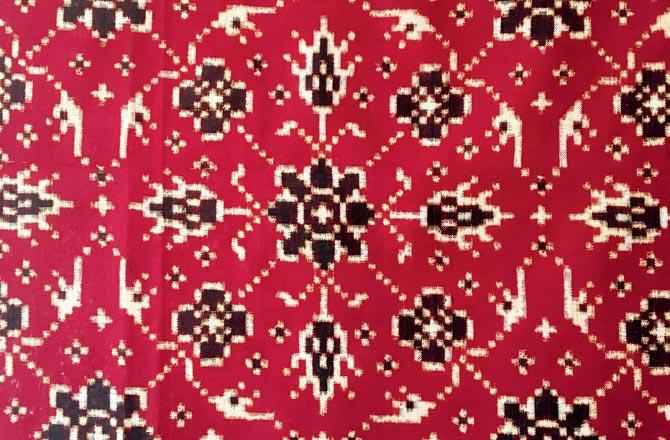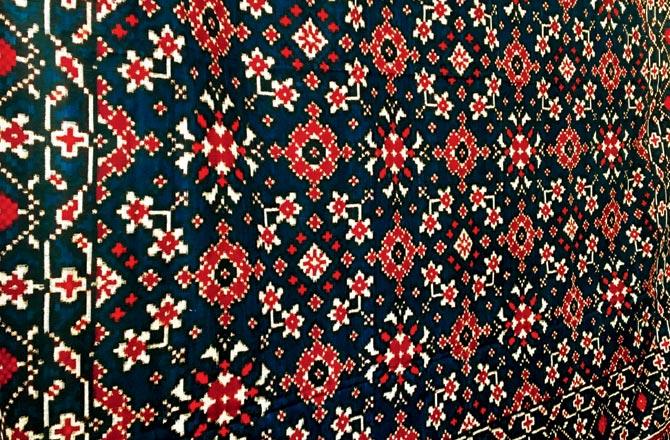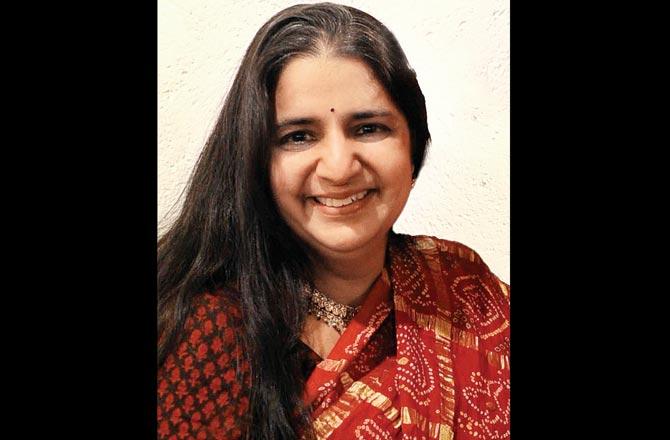As the intricate weave from Patan in Gujarat makes it to Union Culture Ministry's Intangible Cultural Heritage list, here's what you need to know about the prized weave

Malaika Arora wears a contemporary Patan Patola in non-traditional design and colour, by Mumbai-based designer Sangeeta Kilachand. Pic/Tejas Nerurkar
Back in 2014, at the launch of her book Sacred Textiles of India, noted textile revivalist, scholar and historian Jasleen Dhamija had mentioned to this writer that she considers the double ikat weave, the Patan Patola as the most endangered sacred textile of India. And rightfully so, as only two of the original weaver families, the Salvis, continue to practice this craft, a skill that the family has not passed on to anyone outside to keep the lineage exclusive. In a boost for the weave, in the draft of the Intangible Cultural Heritage list recently released by the Union Ministry of Culture, the Patan Patola finds mention.
ADVERTISEMENT

Chhabadi bhat Patola, woven by Vinayak Kantilal Salvi, Patola to order, 1990s. Double ikat silk resist-dyed in madder red and black
Join the pixels
The intricate weaving process, where each of the warp [the vertical thread in a weave] and the weft threads are dyed and tied separately with a thread for the tie-dye process, which demands the weaver to envision the pattern before the weaving begins. The weaving process itself is a mathematical and engineering feat, where tiny grids of squares come together to form different motifs, like the pixels on your screen. "While weaving, the weaver makes incremental precision adjustments so that the raggedness of the edge is seen as little as possible. The saree has no reverse side and the Patola of Patan has the most finesse. The prices though, have remained unaffordable, and it was confined to discretionary spending. The single ikat version of the Patan Patola made in Rajkot is more widely used, as it's available at a fraction of the price, but the motifs are bigger and the edges of the patterns more ragged," says Radhi Parekh, founder of ARTISANS'.

Navratna bhat, woven by Vinayak Kantilal Salvi, Patola to order, 1990s. Double ikat silk, resist-dyed in indigo, madder red, and black
It takes three to four months to prepare the tie-dyed warp and weft threads for one saree of six yards and 48" width, and takes two weavers to weave 8-9" a day, and five to six months to complete a sari. Exceptionally intricate sarees used to even take as much as three years to make, and the Salvis continue to take orders three years in advance. The Salvis hailed from Maharashtra; Chalukyan Raja Kumarpal had invited 700 weaving families to settle in Patan in the 12th Century. It is made using a Chinese silk yarn, which gives the Patan Patola a lovely drape. "Weavers benefitted from the trading via Cambay and Surat," reveals Parekh.

The weaving style has several core patterns; each has a particular name and significance. These motifs, called bhat, include the paan bhat, choktha and the popular narikunj with the dancing lady and the elephant. While chemical dyes are used nowadays for brighter colours, the classic colours were madder, indigo and iron black. The introduction of natural yellow, from which green and the scarlets are created, led to newer shades.
Patan and the world
The skill and time required to weave the Patolu (singular for Patola) meant that it was used for ceremonial purposes, and mainly by royalty and the rich. The weave continues to remain expensive today. The only other double ikat style in India that is practised even today is the Telia Rumal of Telangana. "According to Indian textiles trade expert John Guy, Patan Patola was traded with the royal families of Burma, ceremonial cloths were made especially for the royal family of Indonesia (made to the size of a sarong), and traded by the Dutch in exchange for trading privileges dating back to the 1700s. The elephant motif was a symbol of wealth, power, authority and divinity, if you think of Ganesha. There is a relationship between our ikat and the ikat of Southeast Asian countries," says Parekh. Another factor that also adds to the ceremonial magic of Patan Patola is the nine squares, also seen in embroideries of Kutch; even Jaipur's city plan was based on the nine squares.
Log on to www.patanpatola.com/index.html and Facebook page of Rahul Vinayak Salvi (for for more information on the Patan Patola and the Salvi Family)
Catch up on all the latest Mumbai news, crime news, current affairs, and a complete guide from food to things to do and events across Mumbai. Also download the new mid-day Android and iOS apps to get latest updates.
Mid-Day is now on Telegram. Click here to join our channel (@middayinfomedialtd) and stay updated with the latest news
 Subscribe today by clicking the link and stay updated with the latest news!" Click here!
Subscribe today by clicking the link and stay updated with the latest news!" Click here!






